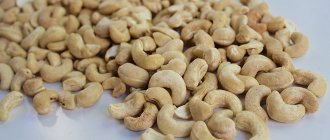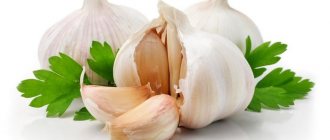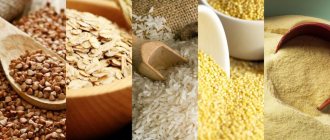Often during lactation, mothers, wanting to diversify their diet, ask themselves a question that directly concerns whether it is possible to eat such an offal as liver while breastfeeding, and which one is better to choose. Let's try to understand the situation and give a comprehensive answer to this question.
Is liver allowed when breastfeeding a baby?
Most doctors claim that there are no contraindications for introducing this product into the diet of a nursing mother. Moreover, many believe that liver during breastfeeding is not only possible to eat, but also necessary.
It contains many useful microelements, including phosphorus, potassium, sodium, calcium and, of course, iron. It is because of the latter that this product is often included in the diet of people who have problems with the hematopoietic system (with anemia, for example).
The liver also contains a lot of vitamins: A, E, K, D. Separately, it must be said that this offal is very rich in protein (about 18%) and at the same time contains a small amount of fat (no more than 3-4%).
Which liver is better to choose?
It is worth noting that the fact of what type of liver the nursing mother uses is also important. That is why young mothers often specify and try to understand whether it is possible to use chicken or beef liver while breastfeeding, and which one is better.
Nutritionists recommend the liver of these pets for consumption. Thus, beef contains in its composition a large amount of easily digestible substances, which is important in the postpartum period, because... helps restore blood lost during childbirth.
Chicken liver is also useful. According to nutritionists, such a product can completely replenish the body’s need for certain vitamins. For example, what it contains promotes better absorption of iron entering the body, which has a positive effect on increasing hemoglobin levels.
While breastfeeding, you can also eat rabbit liver, regardless of whether it is part of the dish or consumed separately.
As for whether it is possible to eat pork and cod liver while breastfeeding, doctors advise abstaining, or eating them in very small quantities. The thing is that such an offal contains a lot of fat. The child’s body is not yet ready to break down such compounds. Therefore, there is a high probability of developing colic in infants.
Pate is a dish in the form of minced meat from the liver of an animal or bird. The recipe may include vegetables and various spices. It has a delicate and mild taste. Traditional pate is made from goose or duck liver. However, beef and chicken are more popular and affordable. Sometimes fish is used.
The pate is great for making appetizers, tartlets and canapés. The product is used as a snack, a full meal and a filling for pancakes. In this article we will look at whether pate is possible while breastfeeding.
Is liver allowed for nursing mothers?
Women who breastfeed pay special attention to their diet, which certainly deserves approval.
However, the diet for breastfeeding should not be too strict so that the baby can receive all the substances necessary for development through breast milk. Therefore, liver during breastfeeding is a suitable product that can enrich mother’s milk with everything necessary. The liver has very little fat, but is rich in B vitamins, as well as A, D, E, K, and contains magnesium, iron, zinc, iodine, phosphorus, calcium, potassium, sodium.
Liver during breastfeeding is allowed to be consumed by a nursing mother in the first weeks after the birth of the child, but include it in the diet little by little, and carefully monitor the baby’s reaction - how its digestive and immune systems will tolerate the new product. It is best to consume liver boiled or stewed.
Liver is a perishable product, so it must be carefully examined before use. The cooked liver will be tasty and tender if it is first soaked in milk and stewed for a short time. Prolonged heat treatment makes the liver tough. It is better to avoid fried liver while breastfeeding.
Cod liver, like pork liver, contains a large amount of fat, their consumption should be limited until the baby is three months old and his digestive system can produce enough enzymes for digestion.
From the age of 10 months, a baby can already eat liver mashed with milk as complementary food, especially with low hemoglobin.
Beef liver is necessary for nursing mothers; it contains a lot of vitamins, micro and macroelements, especially easily digestible iron. The only thing is that the liver also contains a large amount of cholesterol, which should be taken into account by those who have high levels of cholesterol in the blood - eating liver can give impetus to the development of diseases of the cardiovascular system.
A tasty dish can be prepared by choosing a good piece of liver that is dark in color, without white spots, smooth, and cleared of film and bile ducts.
Chicken liver should also be included in the menu of a nursing mother. In addition to vitamins and other micro- and macroelements, chicken liver contains folic acid, which is necessary for pregnant women, nursing mothers and children.
Nutritionists advise everyone to include chicken liver in their menu, because this product is low-calorie, improves digestion, helps absorb iron and produce substances necessary for hematopoiesis. Choline, which is also present in chicken liver, helps improve memory and stimulates brain activity. Eating chicken liver at least once every two weeks helps restore normal functioning of the body. Turkey liver also has these same qualities.
Liver dishes are tasty and healthy, they are quick to prepare, which is important for a young mother who constantly feels short of time. If there is no allergic reaction to this product, then liver must be present in a woman’s diet during breastfeeding.
It is known that a nursing mother needs to monitor her diet very carefully. You need to eat only foods rich in vitamins and minerals. Some mothers go on a strict diet because they are afraid of harming the baby. This should not be done, since the organisms of the mother and child should receive the necessary benefits. Is it possible to eat liver while breastfeeding? This question worries many young mothers very much.
Liver is a healthy and very nutritious by-product. There are few foods that can match the same iron and protein content. The liver has not only nutritional, but also medicinal properties. It was used back in ancient times.
Doctors allow young mothers to introduce this product into their diet when breastfeeding. This can be done from the first week of feeding. But this does not mean at all that you can eat liver without restrictions.
During breastfeeding, mothers should be very careful and not overuse foods.
Cooking correctly
There should be no questions about the method of preparation. During breastfeeding, we consume liver exclusively in boiled or stewed form. You should not overuse fatty and fried foods.
Boiled liver is an excellent addition to salads. In addition, there are a lot of recipes online for rolls, pates and casseroles, minced liver pies made from beef, chicken or fish liver. The most delicious thing is, of course, stewed beef liver with sour cream. A classic recipe loved by many.
The liver cooks quickly. To prevent slight bitterness from remaining after cooking, it is recommended to put the meat in water or cold milk for half an hour.
Some people, and especially nursing mothers, are afraid to include liver dishes in their diet due to the fact that “during life” it is through this organ that the body is cleansed. There are fears that harmful substances could have accumulated in it (growth hormones that are injected into animals, etc.). However, such assumptions are nothing more than a myth: everything harmful comes out of the animal’s body along with bile. In order not to deprive your table of this healthy dish because of this kind of thoughts, purchase meat from trusted suppliers.
Any type of liver is a healthy and tasty product that nursing mothers should eat from time to time. You just need to know when to stop, be sure to buy only fresh product and prepare it correctly.
Similar articles
With the birth of a baby, everything changes, and the nursing diet is no exception. The mother’s nutrition after childbirth in the first days and first month plays a role... For successful breastfeeding, a woman needs to absorb the appropriate...
Liver is an offal that has valuable biological properties and is considered a delicacy. The protein content in it is not inferior to beef; aferritin contained in the protein increases the level of hemoglobin in the blood and promotes normal hematopoiesis. In terms of chemical composition, the main component of the product is water, which explains its short shelf life.
Since ancient times, people have eaten this delicacy and valued it not only for its pleasant taste, but also for certain medicinal properties. During lactation, a woman’s diet is quite limited, let’s talk about how the liver during breastfeeding affects the body of the baby and his mother.
Breastfeeding experts agree that a mother can use this product immediately after birth while breastfeeding her newborn.
It is necessary to maintain moderation in portions, ensure that the liver is fresh and of good quality, and also ensure that the baby does not have problems with stool or allergic rashes.
This happens rarely, but there are cases when, during lactation, a child is found to be intolerant to certain components of a given product. If your acquaintance with liver was successful, you can regularly include it in your daily menu, but even taking into account all the beneficial properties of liver, you should not eat it more than once a day.
Important Features
The first time you use liver, you need to be careful and monitor the baby’s reaction. If he does not have an allergic reaction, he can continue to eat a little liver. However, you can eat this product no more than three times per day.
Sometimes a baby may develop individual intolerance. It’s usually easy to notice: after the mother’s first use of the liver, the baby begins to be capricious and make noise. He may experience colic and a stomach ache. In this case, you should stop eating the offal.
What's the best way to use liver?
The liver can be boiled, fried, baked. You can make many delicious dishes from it, but not all of them will have a beneficial effect on the baby’s condition. A nursing mother is allowed to consume the product only in boiled or baked form. Eating fried liver is strictly prohibited.
A boiled or stewed product is not dangerous because it retains all its valuable substances, especially ferritin. It participates in the processes of hematopoiesis and supplies the body with hemoglobin. Therefore, liver is recommended for use in case of anemia.
Important. If the mother has cardiovascular diseases, consuming liver may aggravate them. You should treat the product with caution if your blood cholesterol levels are high. Therefore, even in the absence of a bad reaction in the child, it is necessary to control the number of doses and frequency during lactation.
Kinds
The liver can be beef, pork, as well as chicken and cod. All these types differ in their properties and healing substances. Each of them should be considered in more detail.
- Cod product is especially recommended for a young mother to eat while breastfeeding, as it contains a storehouse of vitamins for the newborn. Calcium, vitamin A, zinc and phosphorus are what cod liver is rich in.
Consumption of this valuable cod product helps to develop intellectual abilities in the baby.
However, you should use cod liver with caution: it is better not to eat it raw, but at least do it with bread.
Women suffering from high blood pressure should limit its use.
- Beef. Doctors advise eating beef liver: the entire daily requirement of amino acids is contained in this offal. It increases hemoglobin in the blood, saturates the baby’s body with minerals, vitamins and substances.
However, the beef product should be stored properly. The liver, which has been lying around for a long time, gradually loses its benefits. If the liver has been subjected to heat or chemical treatment, it should not be eaten by a nursing mother.
Contraindications for use
It is best to introduce cod liver into the diet of a nursing mother only when the baby is 3-4 months old. It is characterized by high fat content, and therefore the child’s body simply cannot cope with digesting the heavy product.
It should be remembered that the liver contains a huge amount of proteins that place an increased load on the kidneys of a nursing woman. It is for this reason that it is best for people with various kidney problems to avoid eating pork, beef, or chicken liver.
But these are not all contraindications to consuming meat or fish products. It contains cholesterol, which can provoke the development of various cardiovascular pathologies. Therefore, if there is a high level of cholesterol in the blood, liver consumption is not recommended.
How to get rid of stretch marks after childbirth?
Liver is a dietary by-product that is used in therapeutic and preventive nutrition for people of any age. It is served in sanatoriums, kindergartens, schools ]]>
This product is often included in menus developed for maternity hospitals. Some women, who have already gone through such an exciting event as childbirth, worry whether it is possible to consume offal immediately after childbirth, and whether this will harm the baby?
Recipe options
It is not necessary to eat regular liver while breastfeeding. It is better to eat it with other foods, as well as vegetables and cereals. For example, cod is good to eat as a salad.
You need to add an egg, lemon juice and olives to it. This healing salad is very valuable and beneficial for the mother.
Beef liver should be boiled and then cut into small pieces. Then you need to grate the carrots and onions, fry them a little and add the quail eggs. Then mix all the ingredients and make a salad. It turns out to be a very nutritious and tasty dish.
Pork liver is also suitable for use during breastfeeding, but you need to eat it carefully. It is important to consider the amount of food eaten, since abuse can greatly harm the body.
During the period of feeding the baby, the mother is extremely concerned about creating a menu. The consumption of each product is questionable. Liver is an offal that contains vitamins and minerals necessary for the functioning of the body. To ensure that a nursing mother does not have problems when consuming this product, it must be carefully selected, and after taking it, monitor the baby’s reaction.
- magnesium - for healthy bones and muscles;
- iron - to supply organs with blood and oxygen;
- zinc - for the health of the nervous system;
- iodine - to improve intelligence, immunity and mood;
- phosphorus and calcium - for the development of the skeleton, hair and nails;
- potassium and sodium - to maintain water-salt metabolism.
It is also rich in vitamins:
- group B - for the development of immunity, nervous system, digestion;
- A - for eye health and growth;
- D - for better absorption of calcium and prevention of rickets;
- E - for healthy hair, nails and skin;
- K - to prevent internal hemorrhages and strengthen blood vessels.
Fish liver contains fatty amino acids Omega-3, Omega-6 and Omega-9, which are part of fish oil. In terms of protein content, liver is superior to tenderloin. At the same time, it contains almost no fat, which makes it a dietary product safe for women and breastfed children.
Fish liver contains fatty amino acids Omega-3, Omega-6 and Omega-9, which are part of fish oil
Video: nutritionist Lidia Ionova about beef liver
Liver during breastfeeding
Liver can be included in the mother’s menu from the first days after childbirth. But at first it is better to limit yourself to low-fat types: rabbit, turkey. After 2–4 months, add fattier varieties: chicken, lamb, then beef. Liver should be consumed no more than 1-2 times a week. If you eat it more often, mother and baby may experience the following problems:
- bloating and gas formation;
- excess vitamin A, which destroys the liver;
- blood thickening up to thrombosis.
Pay attention to allergic reactions in yourself and your child. At the first sign of distress, rule out the liver and wait a few weeks.
How to choose a liver for a nursing mother
It is preferable to buy refrigerated rather than frozen liver. As a result of freezing, many useful substances decompose, and it is also more difficult to determine the degree of freshness of a piece. However, the taste of frozen liver does not change, and in general the offal is safe for use.
Buy meat and offal only from trusted places, avoid private sellers. Check the expiration date and appearance: the piece should be shiny, from pinkish for a rabbit, scarlet for veal, to cherry for an adult cow and brownish-red for cod and burbot. The liver should be smooth to the touch, without lumps or tears. Whitish, greenish, slimy coating, matte surface are signs of spoilage.
Fresh liver has a glossy surface and red-brown color.
How to use liver
If you have food allergies, tell your pediatrician. He will recommend suitable types of liver.
An allergy to beef or chicken liver has its causes in the blood with which it is saturated, more precisely, in the main blood protein - albumin.
Try new dishes in the morning. Firstly, it is easier to connect the reaction and the new product, and secondly, it is faster to take action. The weight of the first portion should be small, up to 30 g. This way you minimize the possible consequences. Each time increase the portion by 15–30 g to a weight of 100–150 g.
Keep a food diary, at least for the first six months. Note the time of meals, all foods, the condition and mood of the baby. This will make it easier to see the picture in dynamics and identify persistent allergies in time.
It will be convenient for a nursing mother to keep a food diary, noting meal times and foods consumed.
Types of liver for a nursing mother
The menu of a nursing mother can include the liver of animals, birds, and fish. Depending on the variety, the offal contains more of certain substances.
Bird liver
Chicken liver is superior in fat content to pork and beef - 5.9 g versus 3.4 and 3.7 per 100 g, respectively. Carbohydrates in it are 0.73 g, proteins are 20.4 g.
Table: vitamins contained in bird liver
However, fat and other substances from chicken liver are absorbed better than from beef liver, so it is recommended to include it in the mother’s diet during breastfeeding.
Turkey liver contains:
- selenium - for better absorption of zinc;
- copper - to improve hematopoiesis and strengthen the immune system;
- chromium - to normalize metabolism;
- vitamin C - to strengthen blood vessels and improve immunity;
- vitamin PP - for normal fat metabolism;
- amino acids - to improve the general condition of the body;
- enzymes - for digestion.
Goose and duck liver contain large amounts of fat. Consequently, these varieties will have to be abandoned for a while, especially when baked.
Animal liver
Calf liver is considered a dietary product, but it contains little iron. Beef is preferred instead. This variety is in second place in terms of calorie content (after chicken).
A nursing mother can consume lamb liver no earlier than the fifth month. At earlier stages, the offal will cause bloating and abdominal pain in the baby. In addition, lamb is more likely than other types of meat to become infected.
Goat liver is also good for a nursing mother, although it is more difficult to obtain.
Rabbit liver is a dietary product. Low fat content and high iron content in an easily digestible form make it indispensable in the diet during lactation.
Pork liver contains too much fat, so it is not recommended to consume it during lactation.
Fish liver contains special compounds necessary for normal metabolism and healthy hair, skin and nails - essential fatty amino acids Omega-3, Omega-6 and Omega-9.
Fish liver is easier to digest than animal liver.
The fat in it decomposes faster and is less likely to cause allergies. Pollock and burbot livers are difficult to obtain, but these varieties are considered the best for a nursing mother. The content of macroelements in them: proteins - 6 g, fats - 50 g, carbohydrates - 0 per 100 g. Contraindications for use are:
- excess vitamin D (rare in our area);
- hypercalcemia;
- cholelithiasis;
- identified allergies to fish oil and fish meat.
However, these varieties are considered low-allergenic, with the exception of the canned variety. Regular consumption of fish liver will strengthen musculoskeletal tissue, immunity, and cardiovascular system. Cod liver is recommended during pregnancy, but in the first months after childbirth it is better to avoid it. A large amount of fat, especially in canned form, will cause bloating in the baby.
Regular consumption of fish liver will strengthen musculoskeletal tissue, immunity, and cardiovascular system
Recipes for liver dishes for nursing mothers
The listed liver dishes are not only optimal for nutrition during lactation, but also inexpensive in terms of effort and time. Moms will appreciate the simplicity and speed of cooking.
Before cooking, wash the piece and remove the veins and bile ducts. They are difficult to chew and provide no benefit. This applies to the liver of large animals: beef, lamb, goat. Then cut the liver into 1 cm cubes, sprinkle with baking soda and leave in the refrigerator for an hour. Rinse. During breastfeeding, fried foods are completely avoided. It is recommended to boil, stew, or steam the liver. After one month of age, you can bake it. Before the main heat treatment, simmer the liver in milk for 10–15 minutes. After this it will be softer and tastier. Avoid spices and herbs in the first weeks. Add salt from the second week.
Liver paste
Ingredients:
- liver - 400 g;
- water - 400 g;
- salt - to taste;
- butter - 100 g.
- Boil the chopped liver until tender (1-2 hours).
- Then pass through a meat grinder or grind in a blender (add a small amount of broth to the blender).
- Melt the butter, pour into a container with the liver mass, add salt, pass through a meat grinder or mix in a blender again. Cool and put in the refrigerator.
From 4–6 months you can add onions, ground pepper and other spices to the pate. Store in the refrigerator for no more than 2–3 days. You can eat it plain or spread it on bread and toast. From 6–8 months you can add chopped garlic to the pate.
Pate is a perishable product and can be stored in the refrigerator for no more than 2–3 days.
Video: how to prepare dietary pate
Barley with liver
Ingredients:
- pearl barley - 100 g;
- water - 300 g;
- beef liver - 400 g;
- salt - to taste.
Rinse the cereal thoroughly under cold running water and pour into a container. Add the liver there, add cold water and salt. Cook over low heat until tender (1.5–2 hours).
This dish is an alternative to pilaf. Instead of beef liver, you can use chicken liver, then the liver is not added immediately, but half an hour after the start of cooking.
Liver soup
Ingredients:
- liver - 400 g;
- broth - 200 g;
- butter - 4 tbsp. spoons;
- carrots - 1 pc.;
- parsley - 1 pc.;
- leek - 1 pc.;
- cream or sour cream - 200 g;
- yolks - 2 pcs.;
- croutons - to taste.
- Simmer the cleaned liver together with thinly sliced roots and leeks for 30–40 minutes, covered, in oil and 100 g of broth. Then grind in a blender, meat grinder or sieve.
- Add the mixture to the pan, bring to a boil. While stirring the soup, add broth until the consistency of puree is achieved.
- Mix the yolks and cream (or sour cream) in a separate container and pour into the soup. Serve the soup with croutons.
The fat content of sour cream should be up to 15%. Firstly, calcium is better absorbed in such a product, and secondly, there is less risk of adding vegetable fats.
Cream soup is a hearty, tasty and healthy lunch for a nursing mother
The liver is an irreplaceable source of minerals and vitamins for a nursing mother and child. From the first days after giving birth, a mother can add chicken, turkey, rabbit, beef, pollock and other varieties of liver to her diet, and from 10 months - pureed liver for the baby. Preferred cooking methods are steaming, boiling, stewing.
When breastfeeding, it is very important that mommy gets the maximum amount of nutrients from food. Liver is rich in vitamins and microelements, and there is even more protein here than in meat. But there are different opinions about whether it is beneficial for children and breastfeeding women. Is it possible to have liver while breastfeeding? What type of offal do you prefer? How to prepare it correctly to get maximum benefit?
We cook ourselves
If cod liver is sold ready-made, then chicken, pork or beef must be prepared. For your convenience, we present a simple universal recipe for cooking liver. This delicacy can be consumed by mothers during breastfeeding:
- After the procedure of pre-soaking the liver in milk (30 minutes), it is important to cut it into small pieces, otherwise it will take a long time to cook (up to 40 minutes).
- Add water and cook over low heat until the water boils.
- Drain the hot water and add boiled cold water and cook (10-15 minutes).
A healthy and tasty dish is ready, but to diversify the taste palette, if you wish, you can grate zucchini, carrots, cauliflower, stew them and make yourself a healthy vegetable side dish.
If the liver, prepared without frying, seems a little dry to you, you can season it with kefir after the dish has cooled.
Conclusion: tasty, healthy and easy-to-prepare dishes must be present in the diet of nursing women. A valuable source of vitamins will help restore the mother’s body after pregnancy and childbirth, and the baby will grow active, healthy, smart and cheerful.
Benefits and harms of the liver during breastfeeding
Animal liver is a valuable product with many beneficial properties. This product has a lot of advantages:
- The liver is easily digestible, enriching the body with proteins that are necessary for growth and renewal of the body. The advantage is that protein from it is absorbed many times easier than from animal or poultry meat.
- The product contains a significant amount of iron, which prevents anemia - an ailment that many women face after giving birth.
- Calcium is necessary for strengthening bone tissue and elasticity of muscle fibers.
- Sodium is necessary in many metabolic processes and to maintain normal water-salt balance in the body.
- Vitamin C supports the immune system and increases the body's resistance to various infections.
- B vitamins are necessary for the proper development and growth of the baby.
- Folic acid helps strengthen the nervous system.
- Vitamin A is essential for eye health and also significantly transforms hair and skin.
- Just one serving of this product will provide the body with the necessary amino acids, which are necessary for proper protein synthesis and stable brain function.
Liver is a hypoallergenic product, so it can be eaten without fear while breastfeeding. This product is also recommended for the diet of young children, starting from 9-10 months of age.
Low calorie content (from 120 to 140 Kcal in different types) and a small amount of fat make the liver a dietary product that will not harm women trying to lose weight after childbirth.
Another advantage of liver is that it is easy and quick to prepare, which will save time for a young mother who, in addition to household chores, must pay a lot of attention to the baby.
Can a nursing mother have liver? Of course you can! Moreover, experts allow the use of this product already in the first month of breastfeeding.
The possible harm to the liver is that it, like any other product, can cause a negative reaction in the child in case of individual intolerance. The chance that your baby will develop an allergy to the liver is extremely small, but you shouldn’t rule it out at all.
There is an opinion that during the life of an animal, its liver accumulates toxins and is unsafe to eat. It is a myth! The liver is the organ that helps remove toxins. It cannot accumulate them, since its structure and functions are not intended for this. Therefore, you can eat liver and give it to children without fear.
Since liver contains a large amount of protein, people with kidney problems should use it with caution. This does not mean that it should be completely excluded from the diet. Portions should be reasonable, and presence on the table should not be too frequent.
Video
You will learn more about mother’s nutrition in the first time after childbirth in the next video.
Pate is a dish in the form of minced meat from the liver of an animal or bird. The recipe may include vegetables and various spices. It has a delicate and mild taste. Traditional pate is made from goose or duck liver. However, beef and chicken are more popular and affordable. Sometimes fish is used.
The pate is great for making appetizers, tartlets and canapés. The product is used as a snack, a full meal and a filling for pancakes. In this article we will look at whether pate is possible while breastfeeding.
What type of liver is preferable for breastfeeding?
The healthiest thing for nursing mothers to eat is beef liver. It most optimally combines the amount of proteins (18-20 g) and fats (3-4 g). Just 100 g of liver will provide a woman’s body with many useful substances. Dishes with this product are especially useful for iron deficiency anemia. The only drawback of beef liver is a slightly bitter taste, but this can be removed by soaking it in milk or cold water for 2-3 hours.
Pork liver is also allowed during breastfeeding, but due to the higher amount of fat it is a little more difficult to digest. But this product has a more subtle and delicate taste. Therefore, it is pork liver that is recommended by chefs for preparing cutlets, pates, liver cakes, salads, etc.
Don't lose sight of the bird's liver. Chicken and turkey liver are especially useful for lactating women. These products contain large amounts of folic acid and choline, which are necessary for the proper development of the baby’s brain and the formation of the nervous system. You should not eat duck and goose liver during breastfeeding, as these are very fatty foods and will do more harm than good.
If we consider it from the point of view of benefits, then nursing mothers should choose beef or chicken (turkey) liver. Other types are also acceptable in the diet of a young mother, but they will be a little less useful.
Rice casserole
A delicious simple recipe for every day. You can replace rice with buckwheat or oatmeal.
Ingredients:
- 100 grams of rice;
- 120 million water;
- 240 ml of milk;
- 450 grams of liver;
- 100 grams of onion;
- 30 grams of oil;
- 2 chicken eggs;
- spices.
Preparation:
- Combine milk with water and boil rice in this mixture.
- Using a blender or meat grinder, chop the liver and onion.
- Combine rice, chopped liver, eggs and spices.
- Prepare a baking sheet with oil, grease it generously, and lay out the liver mixture.
- Cook in an oven preheated to 180 degrees for no more than 60 minutes.
The conclusions from all the information about beef liver can be drawn unequivocally: it can and should be used for food, especially for nursing mothers. The main thing is to purchase a fresh product and choose the appropriate recipe.
Before consuming offal, be sure to consult a doctor, especially during breastfeeding. Usually there are no prohibitions - both mother and child will be able to get only useful things from this wonderful product.
Cod liver during breastfeeding
Separately, it is worth considering cod liver, as it is one of the fish delicacies that are prohibited during breastfeeding. This product contains a lot of useful elements - vitamins A, D, E, C, amino acids, calcium, zinc, phosphorus, easily digestible protein, etc. Thanks to this composition, the liver is very useful for a nursing mother and baby, as it enriches the woman’s body with microelements, which also pass into breast milk.
But, despite all the benefits, this product can cause significant harm to the baby due to the following factors:
- Cod liver is a strong allergen. If someone in the family is allergic to fish and seafood, then there is a high chance that the child will have a negative reaction to this type of liver.
- In most cases, it is sold in the form of salty canned food, which is contraindicated for breastfeeding. Excess salt can change the taste of milk for the worse, and the baby will refuse the breast. During breastfeeding, it is better to refuse any canned fish and meat.
- People with low blood pressure, excess calcium and vitamin D in the body are also better off avoiding this product, as consuming it will worsen the situation.
Cod liver is not the most desirable product on the table of a nursing mother. If you really want to, you can eat it only after the baby is 6-7 months old, and he has no tendency to allergic reactions.
How much offal can a woman eat while breastfeeding?
When consuming liver during lactation, you need to monitor your baby. Already in the first month of feeding, try to eat a small piece. If the baby is not allergic to the new product, then gradually increase the amount. When introducing a new species, again start with a small piece and watch the baby.
Keep in mind that this product has side effects and if, say, chicken, the baby tolerated it well, then he may have a different reaction to pork. Always follow moderation and do not overeat. If the child does not have an allergic reaction, rash, diathesis and digestive disorders, the liver can be eaten in the usual standard portion of 100 - 150 grams.
The liver menu is varied. All dishes are healthy and very tasty. They are very easy and quick to prepare. When breastfeeding, it is better to eat liver boiled or stewed. It is not advisable to eat it fried.
Liver prepared in the form of a pate is better absorbed by the body. For the pate to be beneficial, you need to cook it yourself. Store-bought pates contain many harmful preservatives that are contraindicated for children. It is advisable to eat a little of it; too much even fresh pate causes constipation and intestinal obstruction in the baby. It must be fresh and properly prepared.
When a bird or animal was raised in a poor ecological zone or if they were sick and ate unnatural food, consuming such liver is strictly prohibited.
There are many ways to prepare this product. The main thing is to use preparation methods that will preserve its beneficial properties as much as possible.
This product has more benefits than harm, and a nursing mother should definitely use it.
When breastfeeding, young mothers are most concerned that their daily diet does not harm the baby. There are a number of foods that do not cause any alarming symptoms or troubles in a child, but there are also those that can cause indigestion in a small stomach.
One of the products that doctors recommend for everyday use is beef liver. There are many recipes that are easy to implement and these meals are not only very nutritious, but also great for feeding breastfeeding mothers.
Liver is a unique product that contains almost all the elements necessary for the body. To saturate the body with hemoglobin, ferritin is needed, and beef liver contains a plentiful amount of it.
In addition to ferritin, it is rich in the following elements:
- calcium;
- sodium;
- potassium;
- iron;
- copper;
- phosphorus.
The calorie content is relatively low - one hundred grams contains 125 kilocalories. Of these, proteins – 20 g, carbohydrates – 4 g, fats – 3 g. A huge amount of vitamins also makes liver an indispensable product on the table.
The healthy by-product is recommended for use in food for people suffering from anemia, as well as diabetes or sclerosis. Every pediatrician will confidently say that during lactation, eating beef liver has a positive effect on the body of both mother and child, and will recommend the best recipe.
How to introduce liver into the diet of a nursing mother
Since liver is a hypoallergenic product, there will be no difficulties with its introduction into the diet (with the exception of cod liver).
In order to do this correctly, you need to follow a few simple tips:
- The liver of animals and birds can be eaten from the first days of a baby’s life.
- The first portion should be small (no more than 30-40 g).
- After the meal, it is necessary to monitor the baby for 2 days.
- If individual intolerance is excluded, then you can increase the portion of liver to 100 g per day.
- Despite all their usefulness, you should not exclude other protein-rich foods from your diet. To get all the nutrients, it is enough to eat liver 1-2 times a week.
How to choose and prepare liver for breastfeeding
When choosing liver in a store, you need to make sure that the product is fresh and of high quality. Since liver contains a lot of water, it spoils quickly, so you need to pay attention to refrigerated foods. It is important to ensure that expiration dates and storage conditions are correct. A frozen version of the liver is acceptable, but in this form it will be difficult to evaluate the appearance of the product. Externally, the liver should look beautiful: rich color without whitish spots, delicate uniform structure.
The method of preparation is very important. During breastfeeding, it is better to boil or stew the liver, and light salads are also acceptable. If we consider liver pancakes, they can be fried in a dry frying pan or with the addition of a minimum of vegetable oil. To prepare the liver, you must first remove films and fat from it. You need to calculate the cooking time correctly; too long a heat treatment makes the product tough.
Liver pancakes recipe:
- Beef or pork liver – 500 g.
- Onions – 1 pc.
- Loaf or white bread - 1 piece (50 g).
- Chicken egg – 1 pc.
Preparation:
- Soak the loaf in water.
- Grind the liver, onion and loaf through a meat grinder.
- Add an egg to the minced meat. If your child is allergic to eggs, you can replace the chicken egg with a quail egg or not use it at all.
- Mix the prepared thin minced meat well and add a little salt. If desired, you can add spices if the baby tolerates them well.
- Bake pancakes in a dry frying pan with Teflon coating. If desired, you can add a few drops of vegetable oil.
- You can serve the pancakes with any side dish or eat them as a separate dish by adding 10% fat sour cream.
Liver is a wonderful product that is perfect for a nursing woman’s menu. And thanks to its beneficial properties and hypoallergenicity, the liver will also benefit infants.
Every woman carefully monitors her diet when breastfeeding. After all, the substances that the mother consumes enter the baby’s body along with breast milk. Sometimes the effects of these substances harm the baby.
During the first months of life, a newborn’s body is still weak and can react sharply to new food. This may include allergies, colic, digestive disorders, anxiety and sleep disturbances.
Liver is an offal with beneficial biological properties, which includes a large amount of protein, iron proteins and ferritin. They saturate the body with hemoglobin, energy and other necessary elements.
Briefly about the most important things
There are definitely some important points to mention. This applies to the purchase and storage of offal. It is better to buy from trusted sellers, then the risk of purchasing a spoiled product is minimized.
The liver should have a beautiful, even color; dark red streaks or watery growths are not allowed. Be sure to remove the film before cooking. It is recommended to soak the product in water or milk, even if the recipe does not include this process.
You can store the liver for no more than two days in the refrigerator. You can freeze it, then the shelf life increases. True, this can only be done with a fresh and high-quality product.
Beneficial features
Unlike meat, liver is less fatty. The body digests offal more easily than whole beef or chicken. At the same time, it is not inferior in usefulness to meat. The product contains a lot of useful vitamins and macroelements. They ensure the normal functioning of the nursing mother’s body and help recover after childbirth. Nutrients promote the growth and development of the baby.
| Elements | Action |
| B vitamins | They are responsible for almost every action in the body, promote metabolism, growth and development of the baby. |
| Vitamin A | Maintains visual acuity, improves skin and hair condition. |
| Vitamin C | Forms and strengthens the immune system. |
| Folic acid | Forms and develops nerve cells. |
| Calcium | Strengthens bones, promotes growth and strengthening of nails. |
| Sodium | Maintains a normal balance of substances in the body. |
| Zinc | Forms the bone skeleton, promotes rapid healing of wounds. |
| Iron | Forms hemoglobin in the blood, triggers and normalizes the functioning of B vitamins |
| Copper | Promotes normal functioning of the respiratory and nervous systems, participates in protein synthesis |
One serving of liver will provide the daily requirement of amino acids. Such dishes are quick and easy to prepare, which is very important for a nursing mother who does not have enough time. This is tasty and healthy food.
Liver during lactation
A low-calorie and hypoallergenic product is a rational choice for a nursing mother. Doctors allow you to eat liver during lactation already in the second week after birth. However, mom should remember the dosage! Start with small portions and monitor your baby's well-being. If your baby has allergies or stomach upsets, it is better to stop using it.
To know exactly what food the newborn’s body reacts negatively to, introduce one new product into the diet. Allow two days between samples. This time is enough to determine the reaction.
Remember, liver deteriorates quickly! Therefore, choose the product carefully, check the production date and expiration date. It is important to ensure correct storage conditions after purchase.
Choose beef or chicken liver when breastfeeding. Other types are difficult for infants to digest, especially in the first three months of life. Take a smooth dark piece without white spots.
During lactation, it is better to avoid fried foods. The liver can be soaked in milk and stewed with vegetables. It should not be simmered for long, as long-term processing makes the product tough. Before cooking, remove the film and bile ducts from the piece.
Liver can be given to a baby in complementary feeding from the tenth month after birth. It is especially useful for children with low hemoglobin. For complementary feeding, wipe the offal and dilute with milk.











